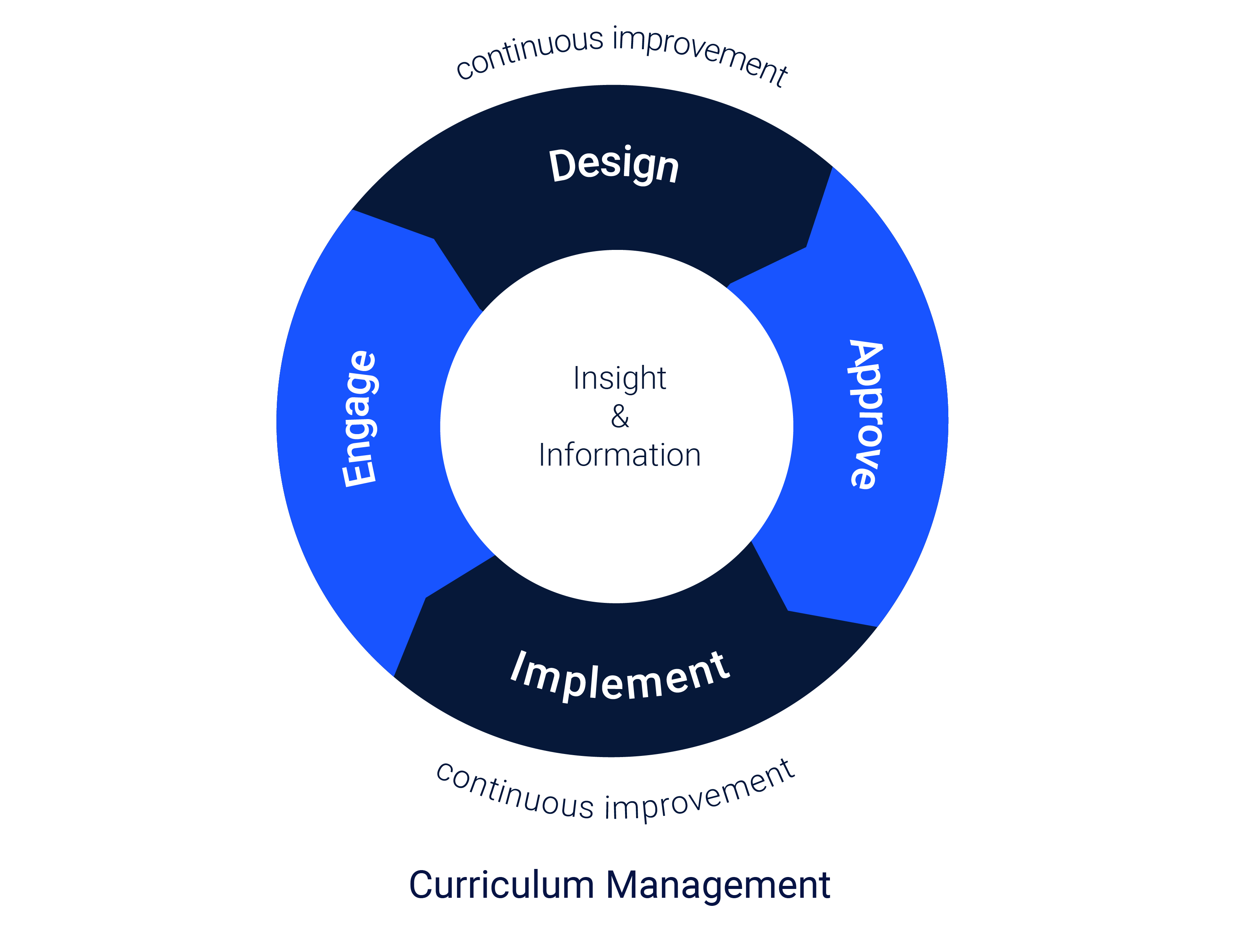What do we mean by curriculum management and why does it matter?
At CourseLoop (formerly known as Factor5 Software), we eat, sleep and breathe ‘curriculum management’. But when you’re so close to something it’s sometimes difficult to remember that not everyone knows exactly what you’re talking about. So what do we mean by ‘curriculum management’, and why do we think it matters?
We use the term to encompass a number of activities and processes which tend to be undertaken by different teams across a university.
By ‘curriculum’ we mean all the components which make up the university’s taught offerings: the courses and subjects; the majors and minors; the specialisations and the offerings, and the way they are all designed and assessed.
‘Management’ is all of the touchpoints along the way from the design of a learning experience through governance, approval and quality assurance, to the student’s experience of choosing what to study next.
We have found the following model useful in helping visualise all of the curriculum management touchpoints. Together, these touchpoints form the ‘curriculum management lifecycle’. It is a continuous improvement cycle which surfaces actionable insight and information.

It’s no surprise that this cycle has things in common with a traditional product development cycle. Using the language of business in an academic context isn’t always appropriate, but it can be helpful to think of the curriculum as a university’s product. After all, it is something which is carefully crafted to meet the needs of a market (students) in order to generate revenue for the institution. Not only that, but individual courses and subjects run through a looping cycle very similar to that of any product: they are designed, they are approved, they are advertised to students, they are taught. Feedback is sought, and the performance of the students is analysed, and that information is used to refine and improve the course or subject for the next cycle. There may also come a time when a course or subject is considered out of date or uneconomic to run, and it is retired or restructured into a fresh offering.
Scratch the surface of this high-level cycle and there is a complex of world of data, pedagogic design approaches, governance processes, regulatory requirements, publishing and marketing. Curriculum management is what enables universities to engage with the complexity in a strategic way, design good learning experiences, meet the requirements of their own governance, as well as external regulatory and accrediting bodies, and fulfil the teaching aspects of their missions.
Given that there are so many parts and actors in the curriculum management cycle, and that revisions and updates are a continuous requirement, it can be difficult to see where to start. In our experience (which comes from working in universities, as well as with them) curriculum management is most successful when viewed as a complete cycle or whole, but addressed incrementally.
Starting with a definitive source of truth and powerful version control is essential, then the opportunity for transformation comes from building a complete end to end platform on this foundation.
Too often we have seen point solutions solving an immediate problem but providing little long term strategic value and causing more problems when they quickly become outdated or lack robust integration capability.
Taking a platform approach allows incremental progress but can quickly deliver strategic advantage, through nimble governance, sophisticated mapping and the communication of rich information to those who need it.
There’s a lot here, and it’s easy to get lost in the detail of the ‘what’ of curriculum management. So perhaps a better question is ‘why?’ If we ask ourselves that, the picture clears and comes into focus: at the centre of it we see your students, and their success.
Curious about CourseLoop's Curriculum Management Solution? Get in touch via info@courseloop.com to learn more.

